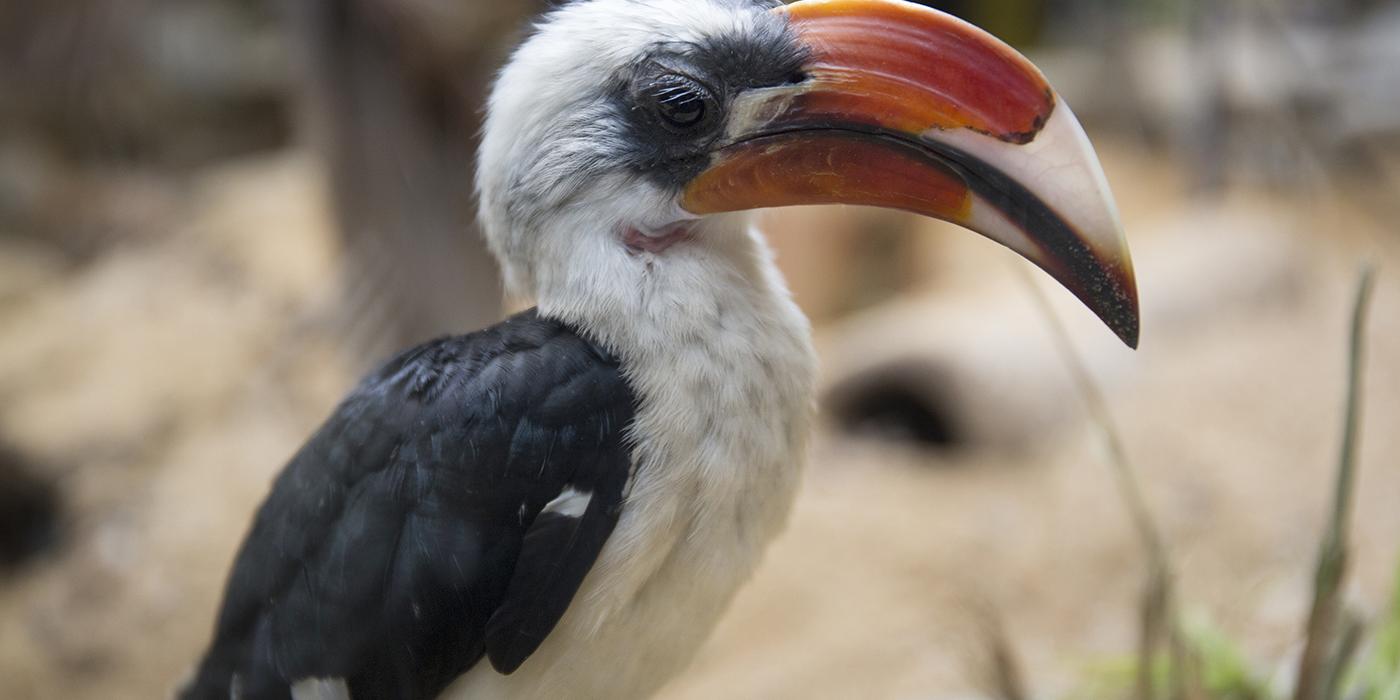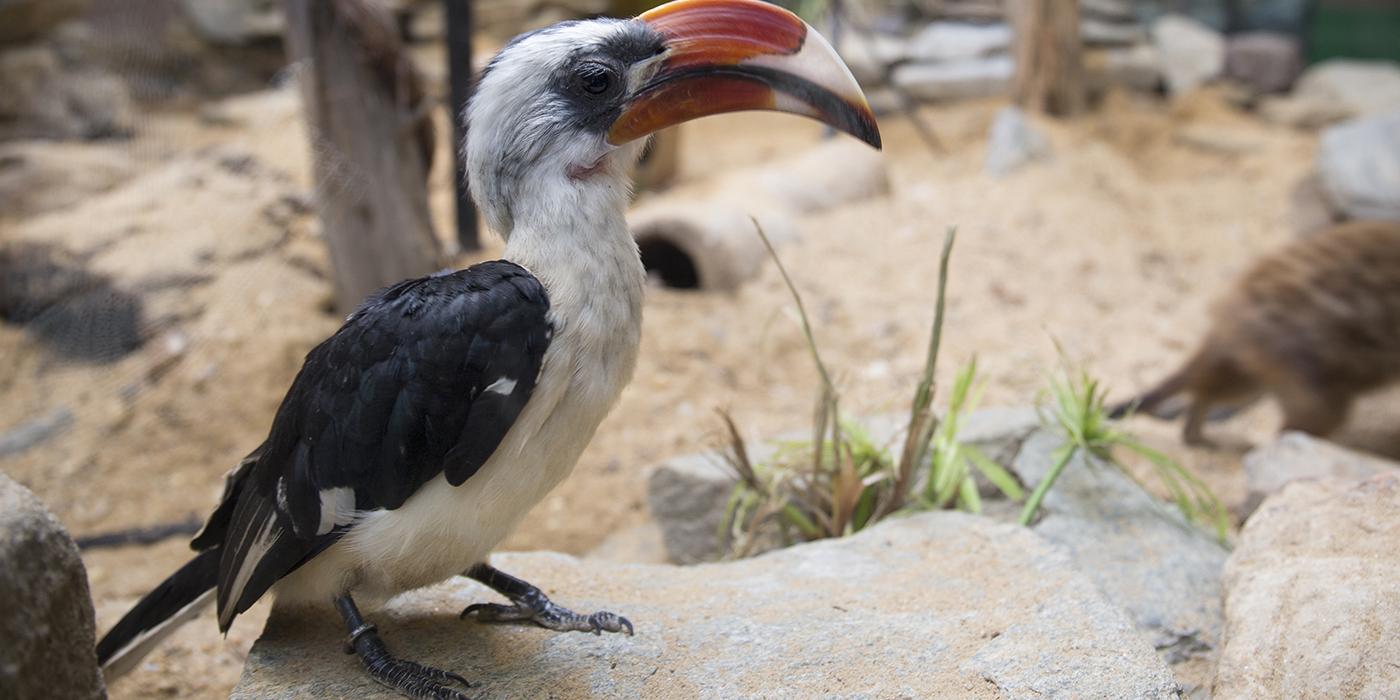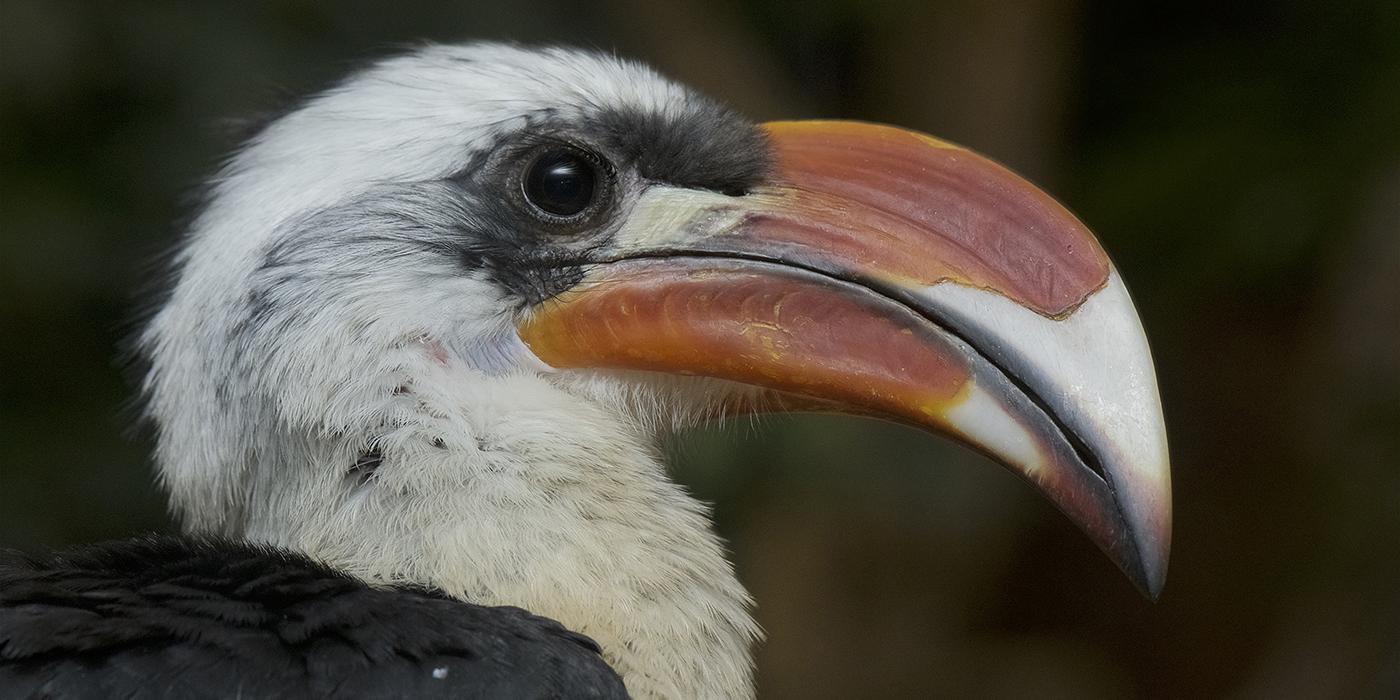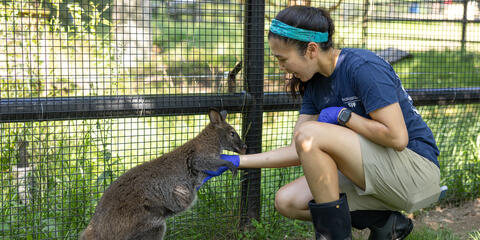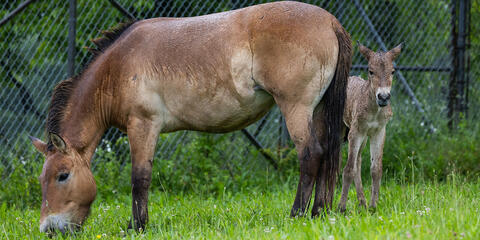Physical Description
Most hornbills are ungainly looking with large, often colorful, beaks and long eyelashes. Male Von der Decken hornbills have a red and cream colored bill, while females will have a solid black bill.
Von der Decken hornbills are named a German explorer, Baron Karl Klaus von der Decken, who wrote about the species while exploring in Africa.
Size
Von der Decken's hornbills can reach 2 feet (60 centimeters) in length.
Native Habitat
Von der Decken hornbills live in eastern Africa, occupying parts of Ethiopia, Somalia, Kenya and Tanzania. They prefer dry, arid conditions, including scrublands, savannas and open bush habitats.
Lifespan
Von der Decken's hornbills can live for about 20 years.
Food/Eating Habits
In the wild they eat small ground prey, eggs, fruits and insects.
At the Smithsonian's National Zoo, they are fed a mix of Bird of Paradise diet, fruit, eggs, pinkies and mealworms.
Reproduction and Development
Hornbills are known for their unique breeding habits. Males find a tree cavity and entice females by bringing her mudding material and food gifts. Females do the mudding using dirt and feces, which turns rock-hard when dried. Females then enter the cavity before mudding up the entrance until just a slim slit is left open. For over two months, males feed the trapped female and the chicks when they hatch, through the small vertical slit. Females break out about two weeks before the young in order to help feed them. When the young emerge, they are fully flighted, though their parents will continue to offer them food for another week.
Conservation Efforts
This species of hornbill has an extremely large range. While populations are generally decreasing due to a loss of large trees that are suitable to nest in, they are still considered widespread.
Help this Species
- Reduce, reuse and recycle — in that order! Cut back on single-use goods, and find creative ways to reuse products at the end of their life cycle. Choose recycling over trash when possible.
- Support organizations like the Smithsonian’s National Zoo and Conservation Biology Institute that research better ways to protect and care for this animal and other endangered species. Consider donating your time, money or goods.
- Are you a student? Did you love what you learned about this animal? Make it the topic of your next school project, or start a conservation club at your school. You'll learn even more and share the importance of saving species with classmates and teachers, too.

